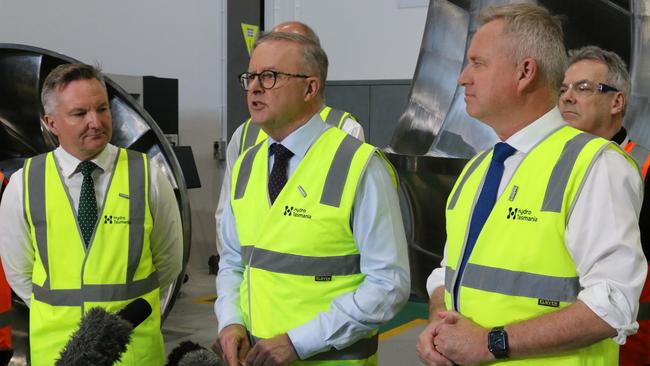While the budget is a fiscal statement, business will be looking for more detail on how the government plans to translate its newly legislated goals for 43 per cent carbon reduction by 2030 on 2005 levels and net zero by 2050 into action.
The government’s commitments also include a target of having 83 per cent of renewables in the energy grid by 2030 – an ambitious goal given that only about 29 per cent of Australia’s electricity generation is provided from renewable energy sources including solar (12 per cent), wind (10 per cent) and hydro (6 per cent).
Passing the legislation in September, Climate Change Minister Chris Bowen said: “We have a lot of work to do, and we have to do it urgently. We are starting a journey for a 2030 emission reduction target in 2022 which is leaving it insanely late.”
Federal legislation binding the country to decarbonisation targets comes on top of increasing pressure from shareholders, the evolution of a green financing industry, more economically viable renewable energy technology and increased social pressure globally for companies to be more proactive when it comes to their approach to decarbonisation and investment realignment from carbon to non-carbon projects.
The current annual meeting season is already shareholders putting companies under public pressure to make bolder commitments towards decarbonisation.
But while many companies – particularly the larger ones with global footprints – are pushing ahead with plans, it will be government policies that will shift the dial from voluntary measures adopted by companies that choose to make commitments to more compulsory measures with more bite. The business sector is now looking for more detail on the combination of stricter legislative requirements and government incentives which will be rolled out to deliver on its promises.

On the spending side, the government on Wednesday announced the first of its $20bn Rewiring the Nation projects – a $1.5bn package of concessional financing to fast track renewable energy zones in Victoria including offshore wind projects.
This will include a $750m concessional loan provided through the Clean Energy Finance Corporation to ensure the completion of the Victoria-NSW interconnector (VNI West) to ensure it is finished by 2028.
The proposed closure of ageing coal-fired power stations has accelerated the need for the link with the Australian Energy Market Operator (AEMO) including it as one of the top five priority projects in the country.
The government will also join with state governments in Victoria and Tasmania for the Marinus Link electricity and telecoms link between the two states.
The projects are in line with AEMO’s Integrated System Plan which the government sees as the road map for the electricity grid.
The budget can be expected to see more announcements of funding for other projects which have a green flag on them.
Industry is now responding to a consultation about the Safeguards Mechanism which will come into force next year, putting more pressure on Australia’s 200-plus big emitters to take more action to cut their emissions.
Bowen has said he will introduce legislation to mandate the changes in federal parliament in November, with final rule amendments in March with the changes coming into force on July 1.
Interlinked with that is the review of the Australia carbon credits system under former chief scientist Ian Chubb, which is set to report by the end of the year.
While the government is not planning to dump the scheme, it does want stricter measures to ensure the integrity of the system particularly around the approval of projects which can qualify for carbon credit generation.
The stricter Safeguard Mechanism and carbon credit regime with more rigorous regulation and transparency will see an expansion in the carbon credit trading market in Australia.
Bowen has made it clear the government is not going to allow offshore projects to qualify for any Australian carbon credits in the near term.
While the budget is not expected to see any unexpected policy shifts, the Treasurer’s rhetoric will be watched closely.
Separately, the Australian Securities and Investments Commission is looking at whether it should follow other countries to make more mandatory reporting of climate change risks.
In the US, the Securities and Exchange Commission has signalled it is looking at doing this for listed companies.
A survey released this week by KPMG shows an increase in the number of ASX 100 companies committing to carbon reduction targets and reporting in line with global standards.
But as KPMG’s Australian partner in charge of sustainability and climate change, Adrian King, said this week, while Australia’s top companies – most of which operate in a global world — are taking a proactive approach to decarbonisation, public commitments and reporting fall away significantly below the ASX 100 level.
The Albanese government plans to deliver on its carbon reduction commitments by a combination of carrots – including investments in renewable energy and transmission projects – and sticks. Corporate Australia is positioning itself to take advantage of the carrots but more detail of the sticks are also on the way.




Next week’s budget is the chance for business to find out more details on the green energy policies of the Albanese government.